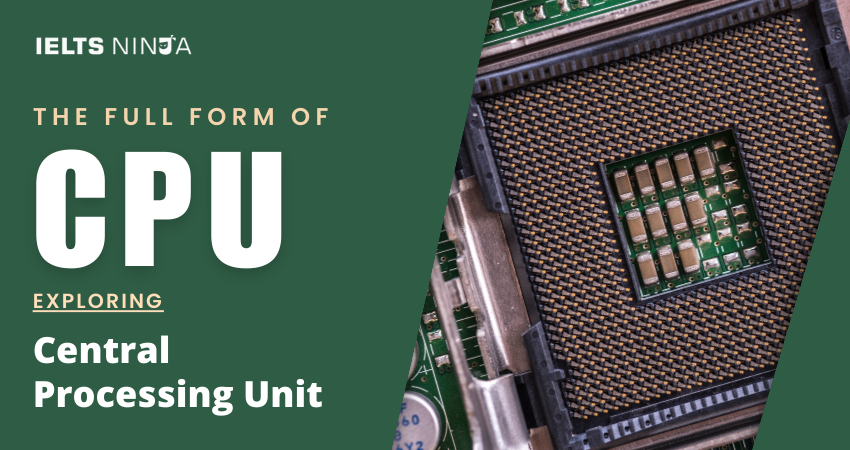In the world of computers and technology, The full form of CPU stands for Central Processing Unit. The CPU is often referred to as the “brain” of a computer, as it is the primary hardware component responsible for executing instructions and performing calculations for various tasks and processes. Understanding the CPU is fundamental to grasping how computers work and their performance capabilities. In this comprehensive guide, we will explore the details of the CPU, its functions, components, and its vital role in computing.
What is a CPU?
The Central Processing Unit (CPU) is the primary processing component of a computer system. It is a microprocessor that interprets and executes instructions from computer programs and applications. The CPU’s performance and capabilities significantly impact the speed and efficiency of a computer.
Functions of a CPU
The CPU performs several key functions, including:
Instruction Execution:
The CPU executes instructions stored in computer memory. These instructions may involve arithmetic operations, data retrieval, or control flow.
Arithmetic and Logic Operations:
The CPU can perform arithmetic calculations, such as addition and subtraction, as well as logical operations like comparisons.
Data Manipulation:
Data is fetched from memory, processed, and then stored back in memory as needed.
Control Unit:
The control unit of the CPU manages the execution of instructions, directing data flow between the CPU and memory.
Clock Speed:
CPUs operate at a specific clock speed, measured in gigahertz (GHz), which determines how quickly it can process instructions.
Components of a CPU
A CPU comprises several components:
- Arithmetic Logic Unit (ALU): The ALU performs arithmetic and logical operations, including addition, subtraction, multiplication, and division.
- Control Unit: The control unit manages the execution of instructions and controls data flow within the CPU.
- Registers: Registers are small, high-speed storage units within the CPU used for temporary data storage and quick access during processing.
- Cache Memory: CPUs often have cache memory to store frequently used data and instructions for rapid retrieval.
CPU Architecture
There are two primary CPU architectures:
Single-Core:
In a single-core CPU, there is only one processing core, limiting its ability to multitask efficiently.
Multi-Core:
Multi-core CPUs have multiple processing cores on a single chip, allowing for parallel processing and improved multitasking performance.
यह भी पढ़ें: सर्वश्रेष्ठ ऑनलाइन आईईएलटीएस कोचिंग एवं प्रशिक्षण अकादमी
Importance of CPU in Computing
The CPU is central to computing for several reasons:
- Performance: The CPU’s speed and efficiency directly impact a computer’s overall performance.
- Multitasking: Multi-core CPUs enable computers to handle multiple tasks simultaneously.
- Computational Power: CPUs are critical for tasks that require significant computational power, such as gaming, video editing, and scientific simulations.
- क्षमता: Improvements in CPU design contribute to energy efficiency and reduced power consumption.
CPU Manufacturers
Several companies produce CPUs, including:
Intel:
Intel is one of the most well-known CPU manufacturers, producing CPUs for a wide range of devices, including laptops and desktops.
AMD:
Advanced Micro Devices (AMD) is another major CPU manufacturer known for its processors that compete with Intel’s offerings.
ARM:
ARM Holdings specializes in designing CPUs used in mobile devices, embedded systems, and IoT devices.
निष्कर्ष
The Central Processing Unit (CPU) is the heart of every computer system, responsible for executing instructions and performing calculations to enable a wide range of computing tasks. Understanding the CPU’s functions, components, and significance is crucial for anyone interested in computer technology, from casual users to professionals in the field.








